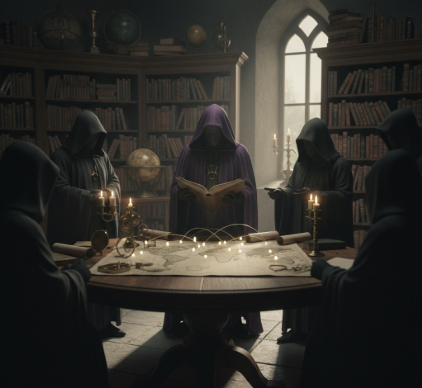History, as we know it, is often a grand narrative of kings, queens, battles, and revolutions. It’s the story told in textbooks, a seemingly straightforward progression of events. But what if the real history was written in invisible ink, in clandestine meetings held in candle-lit rooms? For centuries, whispers of secret societies have captivated the human imagination, suggesting that behind the curtain of recorded events, hidden hands were pulling the strings, shaping empires and ideologies far from the public eye.
These are not mere flights of fancy or the stuff of novels. While often shrouded in myth, many of these organizations were very real, wielding significant influence through their powerful members, accumulated wealth, and protected knowledge. From warrior monks who became the world’s first bankers to enlightened thinkers who plotted revolution, the legacy of these secret fraternities is woven into the very fabric of our modern world.
The Knights Templar: Bankers in Shining Armor
Perhaps no secret society is more famous or more misunderstood than the
Poor Fellow-Soldiers of Christ and of the Temple of Solomon, better known as the Knights Templar. Founded in the 12th century, their official purpose was to protect Christian pilgrims traveling to the Holy Land. What began as a humble monastic military order soon grew into one of the most powerful and wealthy organizations in the medieval world. They were innovators, warriors, and, most importantly, financiers.
The Templars created a sophisticated banking system that was centuries ahead of its time. A pilgrim could deposit assets in London and, with a coded letter of credit, withdraw the equivalent funds in Jerusalem. This made them indispensable to kings and popes alike, and their network of commanderies and fortresses stretched across Europe and the Middle East. Their power became immense, as did their wealth, leading to suspicion and jealousy. In 1307, King Philip IV of France, deeply in debt to the order, orchestrated a brutal takedown. Templars were arrested, tortured into false confessions, and burned at the stake. The order was officially disbanded by the Pope, but the legend of their hidden treasure and secret knowledge has endured for centuries.
From Stone Masons to World Shapers: The Freemasons
As the age of knights waned, the Age of Enlightenment dawned, and with it rose another influential fraternity: the Freemasons. Their origins are traced back to the stonemason guilds of the late Middle Ages, who built the great cathedrals of Europe. These operative masons had secrets of their trade—geometry and architecture—which they guarded closely. Over time, these guilds began accepting non-masons, or “speculative” members, who were more interested in the group’s moral and philosophical allegories than in actual stone carving.
By the 18th century, Freemasonry had transformed into a philosophical society dedicated to the principles of
brotherly love, relief, and truth. In an era of rigid social hierarchy and religious intolerance, the Masonic lodge was a rare space where men of different classes and creeds could meet as equals. They promoted ideals of liberty, reason, and self-improvement. It’s no coincidence that many leading figures of the American and French Revolutions were Freemasons, including George Washington, Benjamin Franklin, and Voltaire. Their ideals of a rational, ordered, and just society, symbolized by the tools of the stonemason, helped lay the intellectual foundation for modern democracy.
It is crucial to understand that Freemasonry is not a religion, nor is it a substitute for one. The organization requires its members to believe in a Supreme Being, referred to generically as the “Great Architect of the Universe,” but it does not dictate any specific faith. This deistic approach was revolutionary for its time, fostering an environment of religious tolerance among its diverse members.
The Short, Bright Flame of the Bavarian Illuminati
Of all the secret societies, none inspires more conspiracy theories than the Illuminati. Unlike the centuries-old Templars or Masons, the real Bavarian Illuminati was a flash in the pan, existing for only about a decade. Founded on May 1, 1776, by a law professor named Adam Weishaupt, the group’s goals were radically progressive for the time. Weishaupt sought to overthrow the power of both the monarchy and the Catholic Church, which he saw as oppressive institutions that stifled free thought.
The Illuminati championed reason, secularism, and republicanism. They operated using a complex system of ciphers, pseudonyms, and a cellular structure, where members only knew their immediate superiors, making the organization difficult to infiltrate. They successfully recruited many influential dukes, politicians, and intellectuals in Germany. However, internal conflicts and paranoia, combined with a crackdown by the Bavarian government, led to their swift demise by 1787. Though they were officially disbanded, the myth of the Illuminati lived on, with conspiracy theorists blaming them for everything from the French Revolution to modern-day global events, a testament to how a small, radical group can cast a very long shadow.
The story of these societies reminds us that history is not always what it seems. It is a complex tapestry with hidden threads running through it. While their direct influence today is a matter of debate, their legacy persists—in the architecture of our cities, the ideals of our governments, and the enduring human fascination with the secrets that lie just beneath the surface of the world we know.









